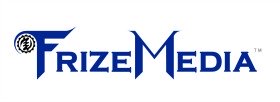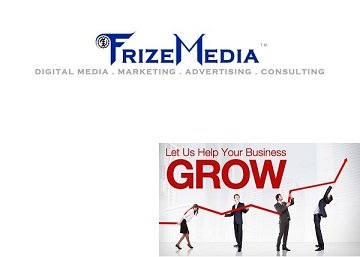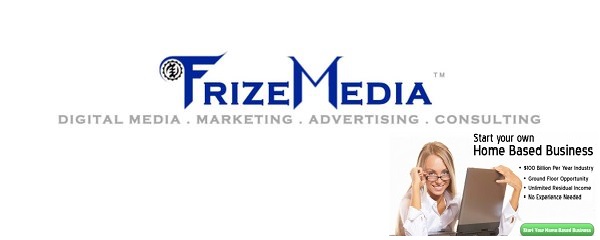Branding
The Complete Guide to Branding: Build, Grow, and Stand Out
Mastering Corporate Internet Branding: Strategies to Build Trust, Relevance, and Loyalty Online

In today’s hyperconnected world, the internet is no longer just a supplementary channel, it’s the primary arena where brands are discovered, evaluated, and chosen.
Yet many corporations still treat their digital presence as a digital brochure or a passive extension of traditional advertising.
This mindset misses a critical opportunity. Corporate Internet Branding isn’t about repurposing TV commercials or uploading PDFs of print brochures. It’s about reimagining how your brand shows up, speaks, and serves in a medium where users are active, informed, and in control.
Unlike passive media like television or print, the internet is driven by intent. People don’t stumble upon your brand by accident, they search, compare, read reviews, and explore alternatives before ever engaging with you. This shift demands a more nuanced, responsive, and customer-centric approach to branding. Your corporate identity must adapt to meet users where they are, answering their questions, solving their problems, and earning trust before asking for a sale.

Why Corporate Internet Branding Matters
Corporate branding online goes beyond logos and taglines. It’s the sum of every digital interaction a user has with your company: your website’s clarity, your content’s usefulness, your responsiveness on social media, and how easily you appear when someone searches for a solution you offer. Done well, it builds credibility, accelerates decision-making, and fosters long-term loyalty, even in crowded B2B or B2C markets.
Consider Nike: while its global brand commands recognition, its golf division can’t rely on the swoosh alone. A golfer searching for “best driver for high swing speed” isn’t swayed by brand legacy, they want performance data, user reviews, and clear differentiators. Nike’s online presence for golf must speak the language of that specific audience, proving relevance before invoking the parent brand’s equity.

Key Principles of Effective Corporate Internet Branding
1. Lead with Relevance, Not Just Recognition
Users arrive online with a mission. Your first job isn’t to shout your brand story, it’s to answer their question. Structure your digital content around real user queries. Use clear headlines, concise value propositions, and evidence (case studies, specs, testimonials) that validate your claims. Only after you’ve proven relevance does your corporate brand become a decisive advantage.
Branding Tip: Create audience-specific landing pages that address distinct needs, e.g., a page for IT buyers focused on security compliance, and another for CFOs highlighting ROI. Each page reinforces your corporate promise while speaking directly to a segment’s priorities.
2. Optimize for Search—It’s Your Digital Front Door
Search engines are the modern marketplace. If you’re not visible when prospects search for solutions you provide, you don’t exist. Invest in search engine optimization (SEO) not just for traffic, but for trust. High rankings signal authority. Use keyword research to understand how your audience phrases their needs, then align your content accordingly.
Branding Tip: Publish authoritative, evergreen content, like “The Ultimate Guide to Cloud Migration for Enterprises”, that positions your brand as a thought leader while naturally attracting organic search traffic.

3. Design for Clarity, Not Flash
Online users value speed and simplicity. Avoid excessive animations, pop-ups, or complex navigation. Your website should guide visitors effortlessly to the information they seek. A clean, intuitive interface reflects professionalism and respect for the user’s time, core elements of a strong corporate brand.
Branding Tip: Audit your site from a new visitor’s perspective. Can someone find pricing, support, or product comparisons in under 10 seconds? If not, simplify.
4. Personalize the Experience Without Compromising Consistency
While tailoring content to different audiences, maintain a consistent voice, visual identity, and core values. This balance, customization within coherence, builds both relevance and brand integrity. Use dynamic content or smart navigation to surface the right message to the right user without fragmenting your brand.
Branding Tip: Leverage CRM or analytics data to personalize post-visit experiences, e.g., showing returning visitors recent product updates or relevant case studies, while keeping your overall brand tone unified.

5. Turn Your Brand into a Helper, Not a Hype Machine
The most trusted corporate brands online are those that educate, not just sell. Offer tools, calculators, webinars, or diagnostic content that empowers users to make informed decisions. When you solve problems before asking for a commitment, your brand becomes synonymous with reliability.
Branding Example: Salesforce doesn’t just advertise CRM software, it offers free resources like “How to Build a Sales Pipeline” and “Marketing Automation Playbooks,” establishing itself as a partner in success, not just a vendor.
The Bottom Line
Corporate Internet Branding is not about being everywhere, it’s about being meaningfully present where your audience is actively seeking solutions. It requires agility, empathy, and strategic alignment between marketing, product, and customer experience teams. Companies that master this shift don’t just survive online, they thrive, turning digital interactions into lasting relationships and brand advocates.
In a world where attention is scarce and choices are abundant, your ability to show up as helpful, credible, and relevant isn’t optional. It’s the essence of modern corporate branding.

4 Key Points To Brand Advocacy
Branding signifies more than a logo and image or even a recognized name. It’s a person’s collective experience with a company’s product or service. A brand is the overall perception of an individual of a company or product built over time.
Here are four things you should keep in mind as you build your company’s brand: 1) Own the “Significant Thing”: Do not try to be all things to all people. Spend your time focusing on a single clear message. Mercedes-Benz owns “ Engineering “ in the car industry because it’s focused on that singular message for decades.
2) Consistency is key: consistent presentation will ensure that your customers recognize you. Be consistent in the use of logos, taglines, visual elements, tone, and ad copy. Coca-Cola it is one of the most recognized brands in the world because they haven’t changed in decades. Make sure your brochures, website, Direct mail, and all the other advertising have the same feel and message.
FrizeMedia Ghana SEO SEM Digital Marketing Proposal
The Best And Top Digital Marketing And SEO Services In Ghana
3) Make your message relevant: know your audience, know what they care about and how to speak to them. Make sure what you sell is what they need. Remember the conversation should always be about your audience, not you.
4) Use a strong offer to motivate: you want your audience to remember you and you want them to buy from you. You need to move them to action. A strong offer should give them a reason to buy. Make the offer clear and appropriate for your brand.
Every time a customer comes in contact with your brand, they will have either a positive or a negative experience. Those experiences will add to their perception of your brand. Those experiences are recalled later when it’s time to make a purchasing decision.

How do you want your brand to be remembered when the time comes for a prospect to buy? You need to start building that positive perception today and do whatever is necessary to maintain it. Good luck.
We Are Helping 1000 Businesses Amplify Their Online Presence
Secrets To Building An Engaging Brand Experience
Browse All Our Informative Topics
InternetBusinessIdeas-Viralmarketing Home Page
Tweet
Follow @Charlesfrize










